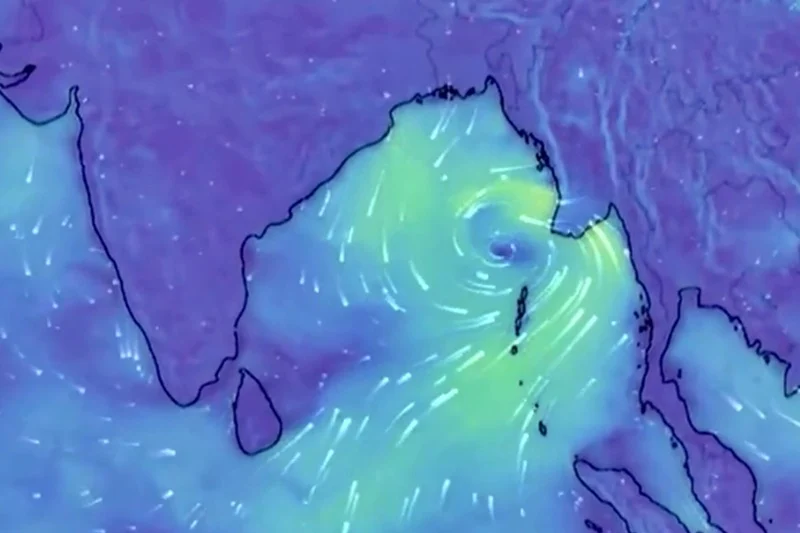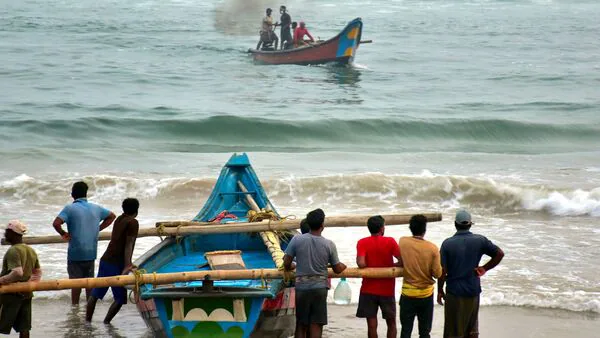Key Highlights:
India Meteorological Department has forecast that Cyclone Dana will turn into a cyclonic storm by October 23, 2024. It is becoming increasingly a weather system over the Bay of Bengal. The coastal areas of West Bengal and Odisha are put on high alert. As a precautionary measure, the Bengal government declared all schools and ICDS centers closed for three days from 23 October. Heavy rain and strong winds with chances of flooding caused widespread preparation throughout.
Origin and Track of Cyclonic Storm Dana
The IMD said Cyclone Dana is developing over Central Bay of Bengal and is likely to move northwest and intensify more in the next two-three days. Multimodel average suggests that the cyclone may make landfall along the coasts of West Bengal and Odisha on October 24. Widespread rain and thundershowers can be expected.

A cyclonic system was developed from a circulation in the upper air over the Andaman Sea on October 20, which gradually developed into a low-pressure area by October 22. The further strengthening is expected as it travels over the Bay of Bengal and poses an enormous threat to the coastal communities in eastern India.
Bengal’s Reaction and Preparedness
The West Bengal government has acted promptly to the cyclone warning. In vulnerable districts, the schools and ICDS centers would be kept closed for October 23 and 24 and 25 to save children and staff. Advisory has been given to fishermen by the state administration regarding not going out during the period of the cyclone. While preparation for relief measures is under way, the government is also sending disaster management teams so that impact of the cyclone is minimized.

IMD predicts extreme to very heavy rainfall over southern Bengal, including Kolkata. Widespread waterlogging along with disruption of essential services is expected. The districts adjacent to the coast-Purba Medinipur, South 24 Parganas, and North 24 Parganas-will be hit the hardest. The wind may shave off a record speed of 100 km/h or more in the districts above.
Odisha on high alert
Like in West Bengal, Odisha has been put on high alert due to approaching cyclone Dana. The Odisha government has closed schools in 14 coastal districts and is asking for vigil from the residents. As per the indication given by IMD’s forecast, Odisha will probably be exposed to considerable rainfall and wind damage at the northern and coastal end.
The state disaster management authority has placed contingency plans such as relief materials at suitable locations, evacuation drills in flood-prone areas, and coordination with the NDRF. Odisha’s experience of cyclones in the past, especially post-handling previous cyclones like Fani and Yaas, has prepared the state well with disaster management protocols to minimize the impact of the cyclone.
Impact of Cyclone Dana on Coastal Areas
Historically, cyclones over Bay of Bengal have been destructive in nature as they have grown strong gradually and affected the densely populated coastal regions. Cyclone Dana is likely to behave similarly because when the cyclone strikes, it is likely to damage both livelihoods, agriculture, and most probably infrastructure in Bengal as well as Odisha. The main sufferers are likely to be fishermen as the IMD has requested complete stoppage of fishing till the storm subsides.
While Cyclone Dana brings heavy rains, this can wreak havoc to low-lying places in terms of flooding, which risks home damage, road damage, and agricultural field damage. Its assault will be supplemented by blowing out electricity, water disruptions, and transport delays upon making landfall.
Country and Rest of the World Monitoring
International weather agencies are closely following the development of Cyclone Dana. Initially, the predictions from the European meteorological model indicated that the possibility of cyclone formation in the Bay of Bengal within mid-October was quite high. The IMD confirmed such a prediction, and global monitoring systems have made forecasting more accurate to support the preparations of the Indian authorities in advance.
Cyclone Dana brings an increased alarm period in the Bay of Bengal, which is more prone to cyclones during the post-monsoon season between October and November. Because the sea surface temperature was warm enough in this region for the formation of cyclones, the coastal states must be alerted.
Conclusion
As Cyclone Dana becomes stronger over the Bay of Bengal, West Bengal and Odisha take important measures to mitigate the impact of the storm. The school closures, fishing bans, and disaster response team preparations undertaken by governments of these states represent preparedness in the face of natural disaster threats. As of October 23, 2024, the storm would yet strengthen and thus vigilance and coordination between state and national agencies would be so critical in minimizing the devastation wrought by Cyclone Dana.
For Latest News Updates Click Here
